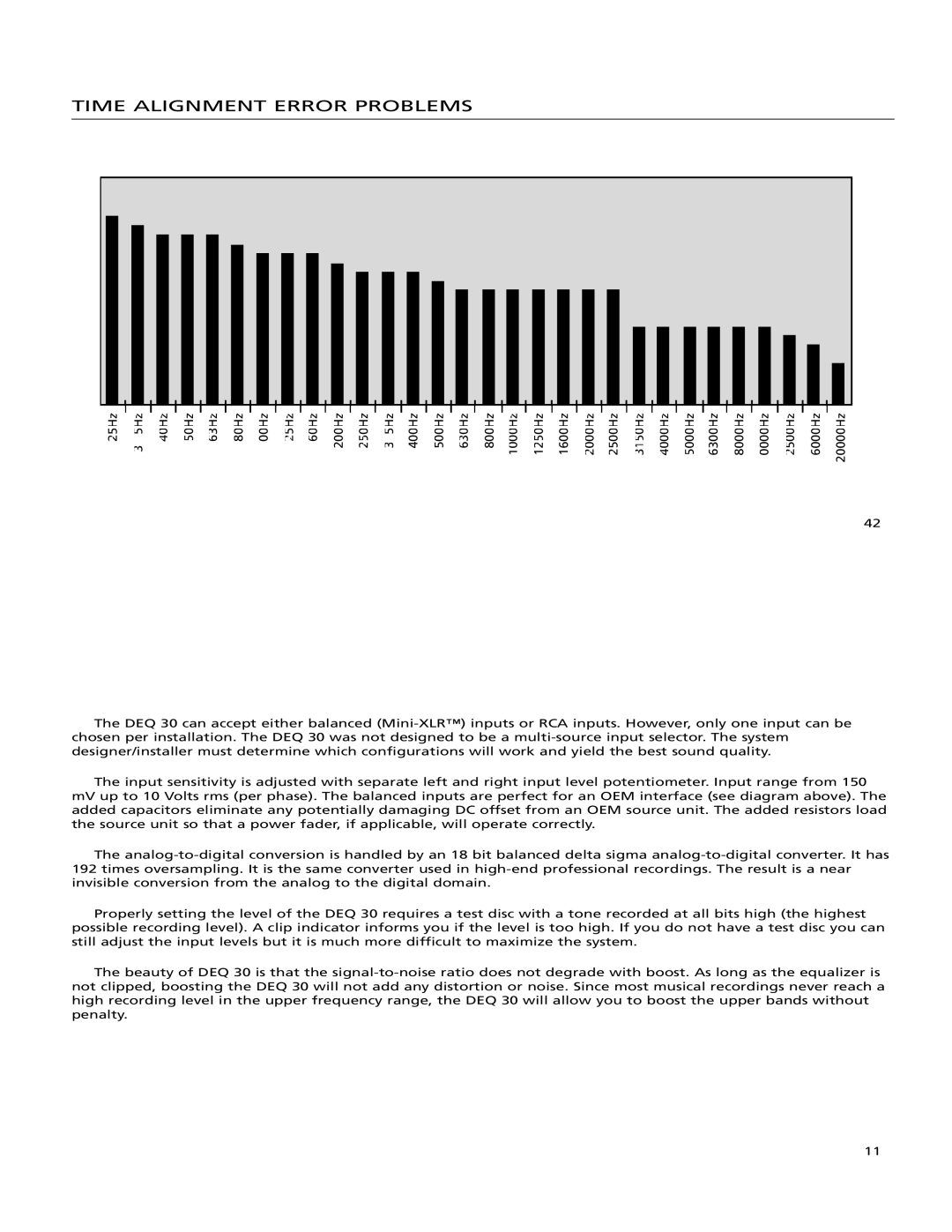
TIME ALIGNMENT ERROR PROBLEMS
25Hz | 31.5Hz | 40Hz | 50Hz | 63Hz | 80Hz | 100Hz | 125Hz | 160Hz | 200Hz | 250Hz | 315Hz | 400Hz | 500Hz | 630Hz | 800Hz | 1000Hz | 1250Hz | 1600Hz | 2000Hz | 2500Hz | 3150Hz | 4000Hz | 5000Hz | 6300Hz | 8000Hz | 10000Hz | 12500Hz | 16000Hz | 20000Hz |
42
The DEQ 30 can accept either balanced
The input sensitivity is adjusted with separate left and right input level potentiometer. Input range from 150 mV up to 10 Volts rms (per phase). The balanced inputs are perfect for an OEM interface (see diagram above). The added capacitors eliminate any potentially damaging DC offset from an OEM source unit. The added resistors load the source unit so that a power fader, if applicable, will operate correctly.
The
Properly setting the level of the DEQ 30 requires a test disc with a tone recorded at all bits high (the highest possible recording level). A clip indicator informs you if the level is too high. If you do not have a test disc you can still adjust the input levels but it is much more difficult to maximize the system.
The beauty of DEQ 30 is that the
11
